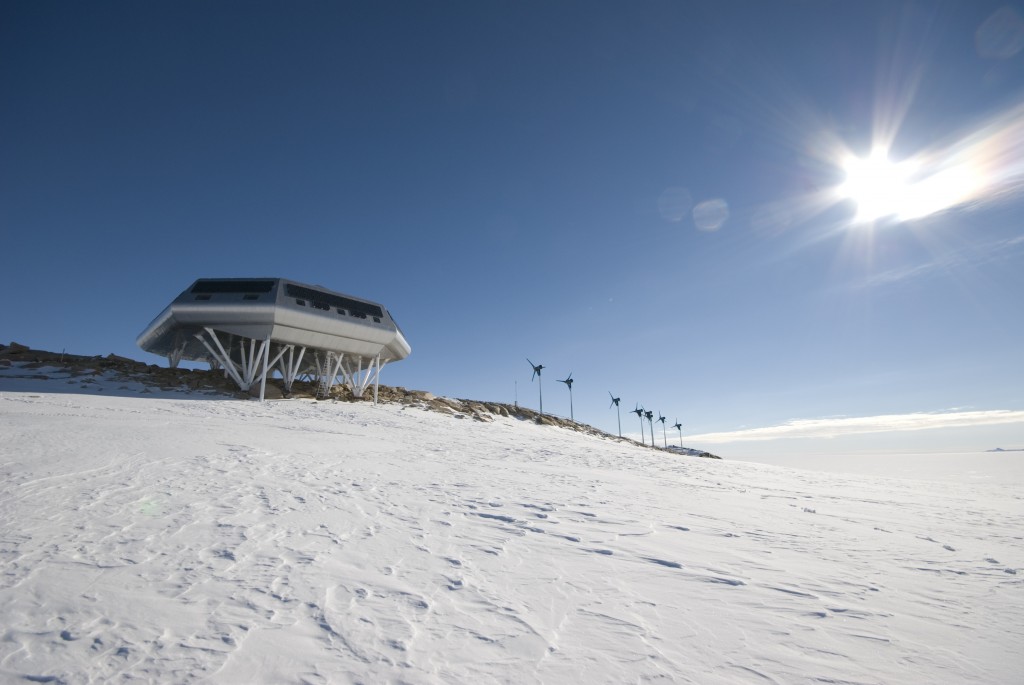More snow less ice in the Antarctic

Princess Elisabeth Antarctica, Belgium’s research station
Copyright Ren̩ Robert РInternational Polar Foundation
Regular ice blog followers may remember a recent post including an Interview with Andrew Shepherd from Leeds University, UK, about ice melt in the Antarctic. One of the factors he explained was that increasing precipitation as a result of warming was falling on the East Antarctic ice sheet as snow and so increasing its mass. Although that particular study showed that the Antarctic has indeed been losing ice over the past 20 years, (contrary to popular opinion), increasing snow was balancing this loss to some extent. Now a study published in Nature shows that a lot of the ice increase from this snow is being lost again, because the extra snow puts pressure on the ice, making it flow faster towards the coast. The authors, from the Potsdam Institute for Climate Impact Research (PIK) say this indicates the Antarctic could be contributing more to the rise in global sea level than previously thought. The scientists say there will definitely be more snow on the Antarctic ice sheet as a result of continuing global warming. The question is how fast the extra ice will move towards the ocean.
Some climate models suggest the increasing snow, taking moisture out of the atmosphere, could actually limit the rise in sea level, but this new study suggests the faster ice flow to the sea will more than make up for this.
I am glad to see an increasing focus on the Antarctic. I have heard too many people say “the Antarctic will never melt” or using the increasing mass of the ice sheet through snow to “disprove” climate change. It is worrying, though, that we still know so little. More power to scientists like Reinhard Drews, who is currently down in the Antarctic based at the Belgian Princess Elisabeth Antarctica station (the world’s first zero-emissions station down there) carrying out research that will contribute to our understanding of these ice flow processes. Dr. Drews is studying the flow dynamics of the Roi Baudouin ice-shelf, which buttresses ice flow from East-Antarctica’s ice sheet. His project is expected to provide important insights into the rapid fluctuations of historical ice discharges, and provide data for improving capacity of ice-flow models, in order to better forecast the balance of the Antarctic ice sheet mass balance in a warming world. More from and on Dr. Drews soon, I hope. You can read a summary from an interview I recorded with Reinhard in Brussels recently here.
You might also like to read Polar Ice Sheets Melting Faster Than Ever.
Antarctic research is an expensive business. Reinhard Drews’ research trip is being funded with a fellowship from the International Polar Foundation and the InBev-Baillet Latour Fund, with the support of the Scientific Committee on Antarctic Research.
















